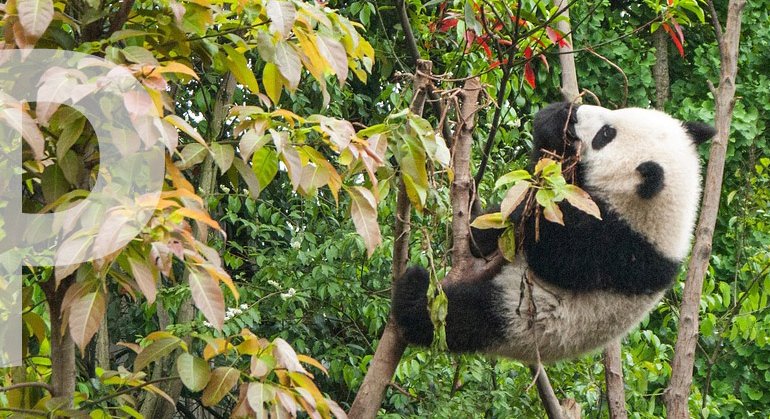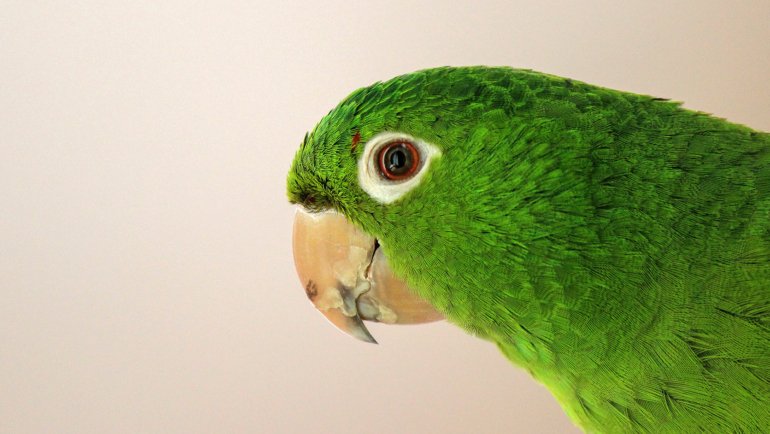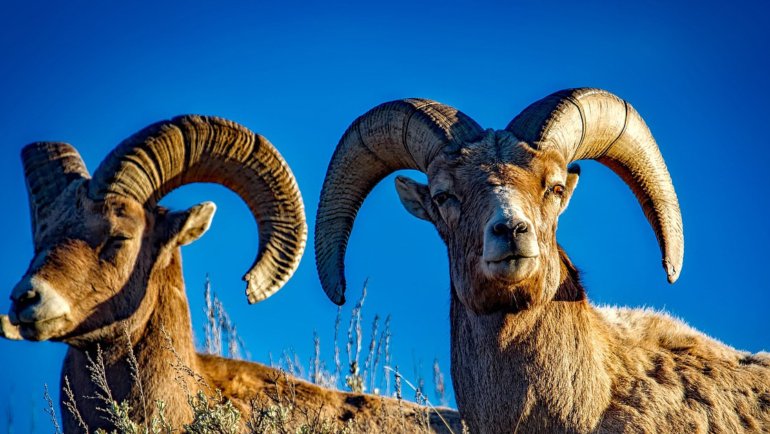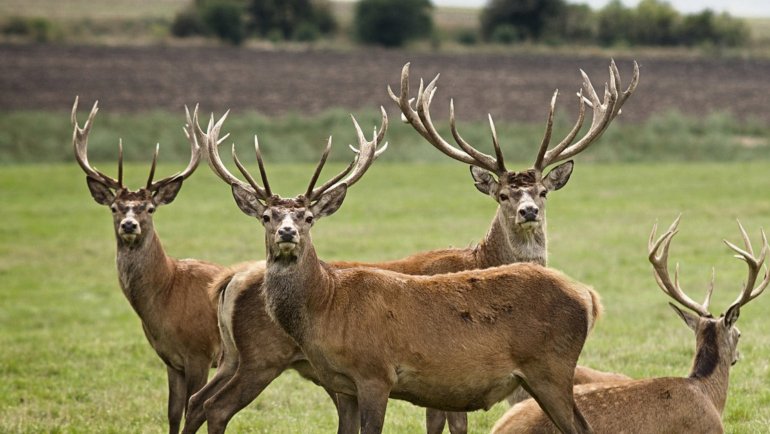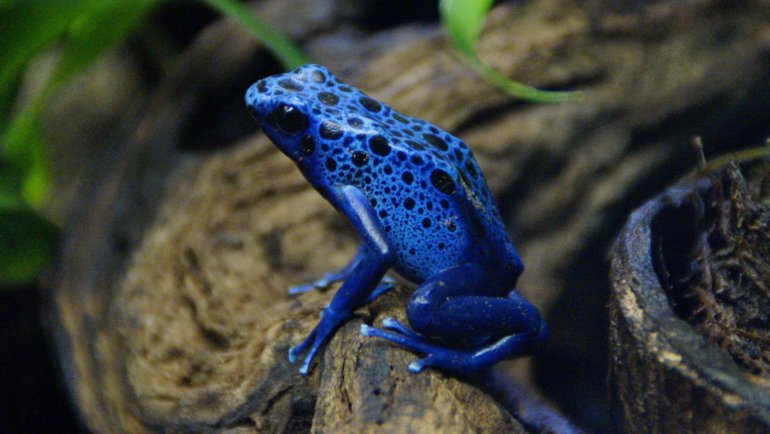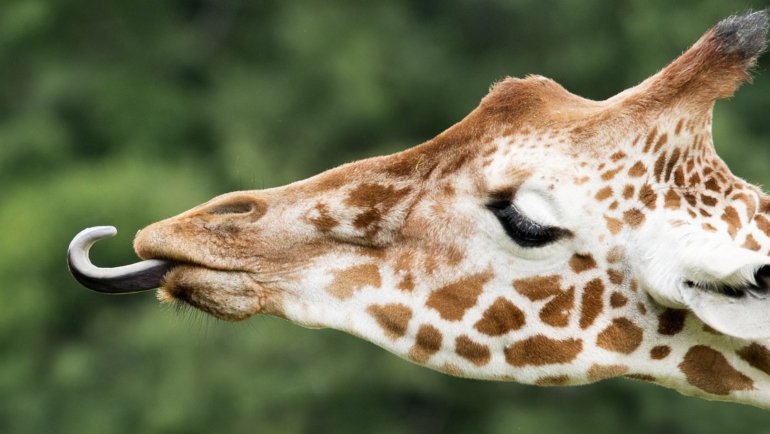In the animal kingdom, diversity is the name of the game, and physical adaptations are a key part of this rich tapestry. Among these adaptations, short arms or limbs in certain animals stand out for their distinctiveness and the unique advantages they offer.
This article delves into the world of ten animals, both ancient and modern, who are notable for their short arms. From the powerful limbs of a gorilla to the almost invisible wings of a kiwi bird, each of these animals demonstrates how size, indeed, isn’t everything, and how each adaptation serves a purpose in the wild.
Animals With Short Arms
Kangaroo
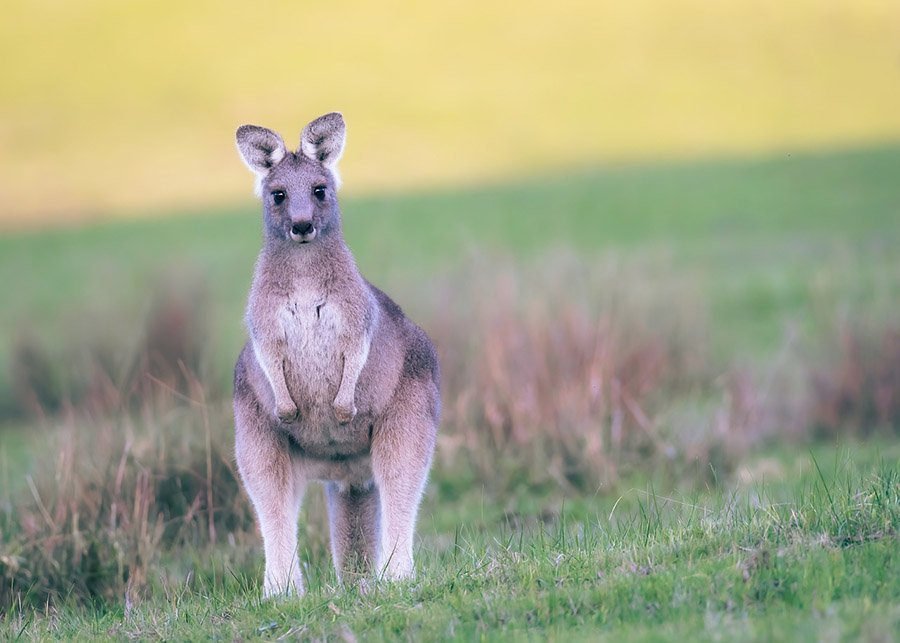
- Scientific Name: Macropus (Genus for larger kangaroos)
- Type of Animal: Mammal
- Where Found: Australia
- Conservation Status: Varies by species; from Least Concern to Endangered
Kangaroos, synonymous with the Australian outback, are marsupials well-known for their powerful hind legs and large tails, which overshadow their relatively small front limbs.
These front limbs, though short, are quite strong and are used for a variety of activities including feeding, grooming, and defense. Kangaroos are primarily known for their unique mode of locomotion – hopping – which allows them to cover large distances efficiently in the search for food and water.
The kangaroo’s social structure typically involves small groups, or mobs, which provide safety in numbers from predators. As herbivores, they play a significant role in shaping the vegetation of their habitats. Kangaroos have adapted to a wide range of climates across Australia, from tropical forests to arid deserts.
Did you know? A kangaroo’s hop is not only an efficient way to travel, but it also conserves energy. The tendons in their legs work like springs, storing energy as they land and releasing it to propel them forward.
Emperor Penguin

- Scientific Name: Aptenodytes forsteri
- Type of Animal: Bird
- Where Found: Antarctica
- Conservation Status: Near Threatened
Emperor penguins are the tallest and heaviest of all living penguin species, uniquely adapted to life in Antarctica. Their short arms, evolved into flippers, are perfectly designed for swimming rather than flying.
Underwater, these flippers make them agile swimmers, capable of reaching speeds and maneuvering with precision while hunting for fish, krill, and squid. On land, their waddle is endearing but also an efficient way to conserve energy in their harsh, cold habitat.
These birds are remarkable for their breeding cycle, which occurs during the Antarctic winter. Males endure the harsh conditions to incubate the eggs, while females forage at sea. Emperor penguins’ ability to survive and breed in one of Earth’s most extreme environments is a testament to their incredible adaptation.
Did you know? Emperor penguins can dive deeper than any other bird, reaching depths of over 500 meters (1,640 feet), and can hold their breath for more than 20 minutes.
Platypus

- Scientific Name: Ornithorhynchus anatinus
- Type of Animal: Mammal
- Where Found: Eastern Australia and Tasmania
- Conservation Status: Near Threatened
The platypus, one of the only two monotremes (egg-laying mammals) still in existence, is a unique creature with a host of peculiar features. Among these is its short limbs, which are webbed and well-suited for its aquatic lifestyle.
The platypus uses its front limbs for paddling in the water while the hind limbs and tail steer. On land, these limbs appear awkward, but they allow the platypus to burrow effectively along riverbanks.
These animals are known for their duck-like bill, which is highly sensitive and helps them locate prey underwater through electroreception. Platypuses are generally nocturnal or crepuscular, feeding on aquatic invertebrates. They lead a solitary life, coming together only to breed.
Did you know? Male platypuses have a spur on their hind limbs that can deliver venom, a rare trait among mammals.
Hippopotamus
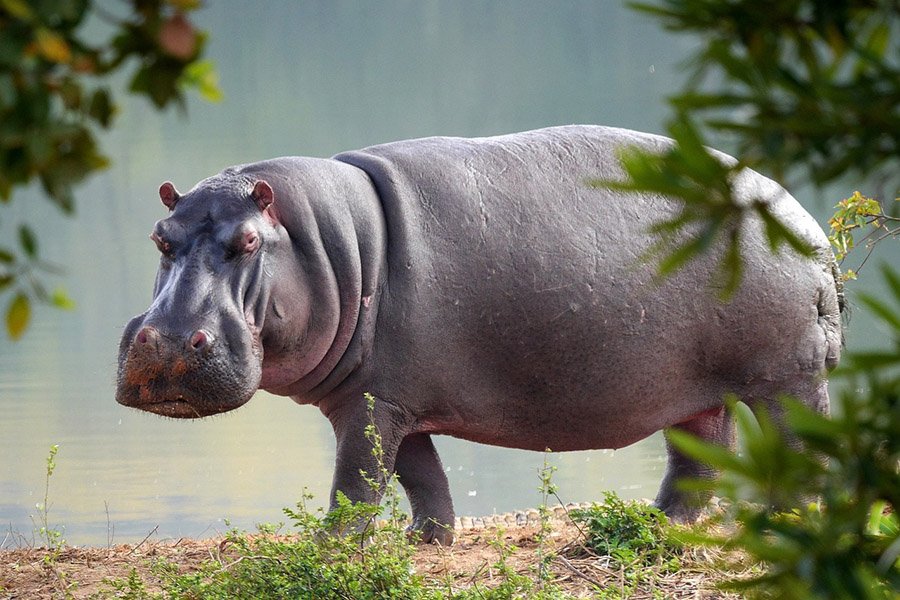
- Scientific Name: Hippopotamus amphibius
- Type of Animal: Mammal
- Where Found: Sub-Saharan Africa
- Conservation Status: Vulnerable
The hippopotamus, commonly known as the hippo, is a large, mostly herbivorous mammal noted for its barrel-shaped torso, enormous mouth and teeth, and relatively short limbs. These short, sturdy limbs support their massive bodies both in water and on land. Hippos spend most of their day submerged in rivers and lakes to keep their large bodies cool under the hot African sun and emerge at dusk to graze on grasses.
Despite their bulky frame and short legs, hippos are capable swimmers and can run surprisingly fast over short distances. They are social beasts, living in groups called pods, herds, or bloats. Hippos play a significant role in African ecosystems, impacting the rivers and lakes they inhabit through their grazing and movement patterns.
Did you know? A hippo’s yawn, often seen as a sign of aggression, is actually a way of displaying dominance or threatening other hippos, especially in disputes over territory.
Badger

- Scientific Name: Family Mustelidae
- Type of Animal: Mammal
- Where Found: North America, Ireland, Great Britain, and Scandinavia
- Conservation Status: Ranges from Least Concern to Endangered
Badgers, belonging to the family Mustelidae, are known for their short, powerful limbs, which are highly adapted for digging. They have long claws on their front paws, which they use to dig burrows for shelter and to hunt for food. Badgers are omnivorous, consuming a wide variety of food, including worms, fruit, and small mammals.
These animals are mostly nocturnal and lead a solitary life, except during the breeding season. Badgers are known for their ferocity and will defend themselves vigorously against larger predators. Their burrowing habits significantly contribute to soil aeration and nutrient mixing.
Did you know? In some cultures, badgers are associated with wisdom and are often featured in folklore and mythology.
Wolverine

- Scientific Name: Gulo gulo
- Type of Animal: Mammal
- Where Found: Northern boreal forests and subarctic and alpine tundra of the Northern Hemisphere
- Conservation Status: Least Concern
The wolverine, often referred to as the “glutton,” is the largest member of the weasel family. Despite its small size, the wolverine is known for its strength and ferocity. It has short but powerful limbs equipped with large paws that enable it to trek through deep snow and climb trees. Wolverines are solitary animals with a diet that includes carrion, small animals, birds, and eggs.
Wolverines have a vast territory range and are known for their endurance. Their thick fur and stout build help them survive in harsh, cold environments. Wolverines play a crucial role in their ecosystem as scavengers, helping to keep their environment clean and in balance.
Did you know? Wolverines have a special upper molar in the back of their mouth that is rotated 90 degrees, which helps them tear off meat from prey or carrion that has been frozen solid.
Koala
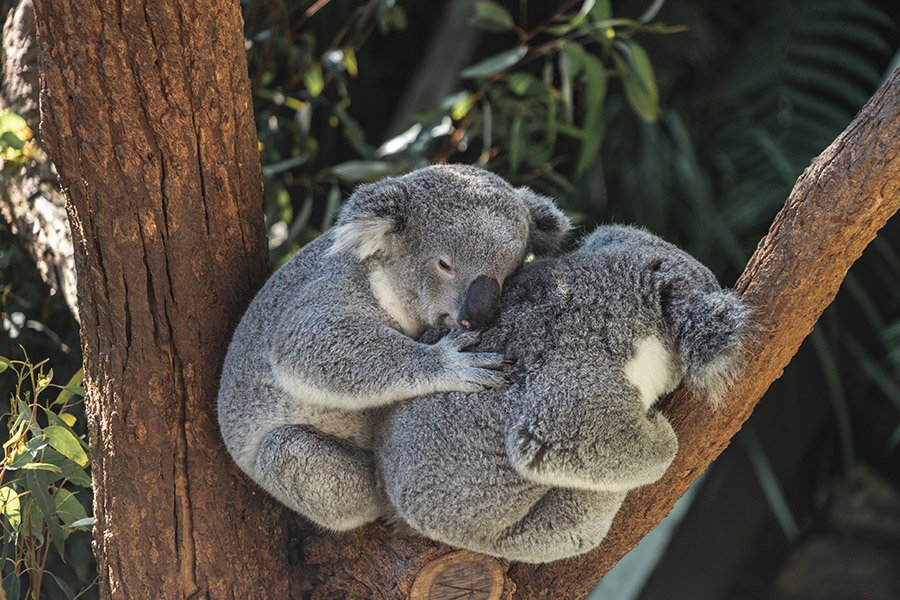
- Scientific Name: Phascolarctos cinereus
- Type of Animal: Mammal
- Where Found: Eastern and Southern Australia
- Conservation Status: Vulnerable
Koalas, one of Australia’s most iconic animals, are known for their stout, tree-hugging bodies and relatively short limbs. These limbs, though short, are muscular and adapted with sharp claws, perfect for a life spent mostly in eucalyptus trees.
Koalas feed almost exclusively on eucalyptus leaves, which are tough and fibrous, requiring a specialized digestive system. Their slow metabolism allows them to conserve energy, hence spending long hours sleeping in trees.
Despite their cuddly appearance, koalas are solitary animals, with a strong territorial instinct, especially males. Their habitat is increasingly under threat due to urbanization, wildfires, and other environmental changes. Conservation efforts are critical to protecting this unique species and their habitat.
Did you know? Koalas have individual fingerprints that are virtually indistinguishable from human ones, even under a microscope.
Quokka

- Scientific Name: Setonix brachyurus
- Type of Animal: Mammal
- Where Found: Southwest coast of Western Australia
- Conservation Status: Vulnerable
The quokka, a small marsupial native to Australia, is most famous for its charismatic expression and friendly nature. Despite its relatively small size, what sets the quokka apart are its short, powerful arms. Primarily used for foraging and navigating through the dense underbrush of its habitat, these arms are perfectly suited for its lifestyle. Quokkas are a type of small wallaby, with compact, stocky bodies, rounded ears, and a tail that helps with balance.
Quokkas are herbivores and primarily nocturnal, feeding on a variety of plants and leaves. They have adapted well to their environment, being able to survive in an area with few freshwater sources. One of their most remarkable traits is their adaptability to human presence, often appearing remarkably tame and approachable. Quokkas live in family groups and are known for their ability to hop and climb small trees in search of food.
Did you know? The quokka is often referred to as the “world’s happiest animal” due to its seemingly cheerful demeanor and the tendency to appear as if it is smiling. This unique characteristic has made the quokka a popular subject for photographs among visitors to its native habitat.
Pangolin

- Scientific Name: Family Manidae
- Type of Animal: Mammal
- Where Found: Africa and Asia
- Conservation Status: Ranges from Vulnerable to Critically Endangered
Pangolins are unique mammals known for their protective keratin scales, long tongues, and short, powerful limbs. These limbs, equipped with sharp claws, are perfect for excavating ant hills and termite mounds, which are the main components of their diet. Pangolins are solitary and primarily nocturnal animals. When threatened, they can roll into a tight ball, with their tough scales acting as armor against predators.
Pangolins are among the most trafficked mammals in the world, sought after for their meat and scales. This has led to a dramatic decline in their populations, making conservation efforts crucial for their survival. Protecting pangolins is not only important for biodiversity but also for maintaining the ecological balance, as they control insect populations.
Did you know? Pangolins consume tens of thousands of ants and termites each day, using their long, sticky tongues to reach into nests and burrows.
Tyrannosaurus Rex

- Scientific Name: Tyrannosaurus rex
- Type of Animal: Reptile
- Where Found: North America (fossil records)
- Conservation Status: Extinct
The Tyrannosaurus rex, one of the most well-known dinosaurs, was infamous for its massive body and disproportionately small arms. Despite being one of the largest land carnivores, the T-rex’s arms were relatively short, measuring only about 3 feet long. However, they were muscular and may have been used to assist the predator in lifting itself off the ground or holding prey.
The T-rex dominated its environment in what is now North America during the late Cretaceous period. It was a formidable predator, with a powerful bite force capable of crushing bone. The T-rex continues to fascinate scientists and the public alike, contributing significantly to our understanding of dinosaur biology and the Mesozoic era.
Did you know? The T-rex had two-fingered hands, and while its arms were short, they were incredibly strong and capable of lifting hundreds of pounds.
Why Do Some Animals Have Short Arms?
The variation in limb length among animals, particularly those with notably short arms, is a fascinating aspect of evolutionary adaptation. Understanding why some species have evolved to have short arms reveals how different anatomical features can serve specific functional purposes in the wild. Here are key reasons why some animals have short arms:
Environmental Adaptation: Short arms can be an adaptation to specific environmental challenges. For example, animals like pangolins and badgers have short, powerful limbs with strong claws, ideal for digging and burrowing. This adaptation allows them to access food sources underground or create shelters in their habitat.
Body Support and Balance: For some large animals, short arms help maintain balance and support their body structure. The massive build of creatures like the hippopotamus or gorilla requires robust limbs that can support their weight, particularly when walking or performing other physical activities.
Predatory Techniques: In the case of prehistoric predators like the Tyrannosaurus rex, short arms may have compensated for other dominant features like their powerful jaws. While the T-rex’s arms were short, they were muscular and may have been used for specific tasks like holding prey or aiding in standing up.
Energy Conservation: Shorter limbs can also be an adaptation for conserving energy. Animals like koalas, which have a low-energy diet and a sedentary lifestyle, have short limbs that are sufficient for their limited movements, mainly climbing and eating in trees.
Evolutionary Trade-offs: In evolutionary biology, a trade-off occurs when one trait is favored, but there is a cost to another trait. Short arms in some animals might be the result of such trade-offs, where other parts of the body, like strong legs or an elongated neck, have been favored and developed more prominently.
In summary, short arms in animals are not a disadvantage but rather a specialized adaptation that has evolved to suit various survival strategies. These adaptations highlight the incredible diversity and ingenuity of life in responding to different environmental and ecological demands.
